Lost image of Bonnie Prince Charlie discovered by X-ray
- Published
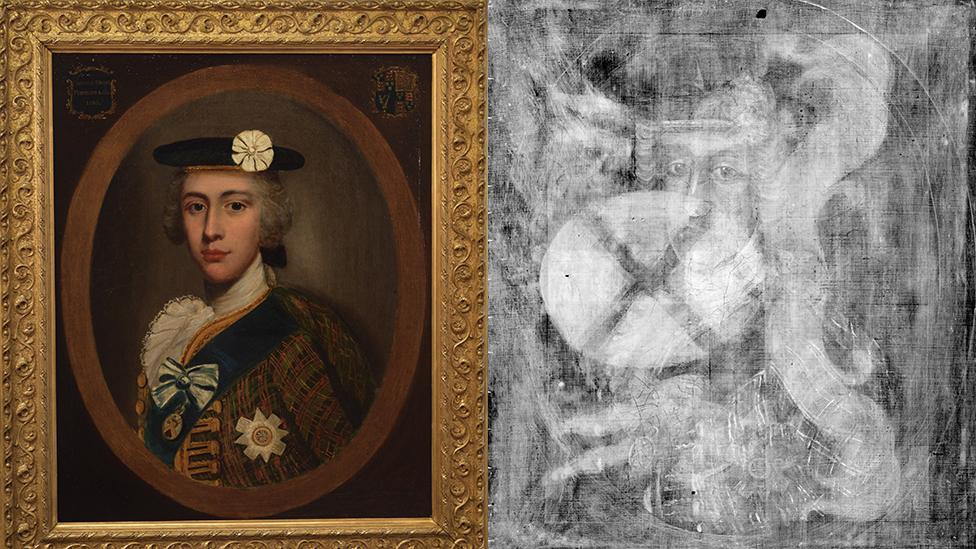
The image (right) was discovered behind the Highlander Portrait - one of the most widely replicated portraits of Charles
A lost image of Bonnie Prince Charlie has been uncovered using X-rays.
It was discovered behind the well known Highlander Portrait, which appears on Jacobite memorabilia.
An X-ray and conservation analysis have revealed that the original portrait of Charles, with brown eyes, was painted on top of what appears to be a Jacobite battle flag.
Doctor Bendor Grosvenor is the Conservator and Art Historian who made the discovery.
The unknown portrait of Bonnie Prince Charlie has gone on display at the West Highland Museum in Fort William.
It shows Charles wearing tartan, a white cockade in his bonnet, and the Order of the Thistle, the pre-eminent Scottish Order of Chivalry.
Experts believe some of the portrait was repainted during the 19th Century to make Charles "bonnier", even giving him blue eyes instead of brown.
Dr Bendor Grosvenor, who discovered the portrait, told BBC Radio's Good Morning Scotland Programme about the find.
"This is an image that's on the snuff boxes, Jacobite glasses, I think it's been on a few shortbread tins as well. But we've never known where the original image comes from," he said.
"Most of the images are thought to be taken from a little engraving, which was called The Highlander Portrait, made by an artist called Robert Strange, who was in the Princes retinue. He was a Jacobite rebel.
"But we never knew where the image came from, the original one, and I think this is it. And there it was, hiding beneath another portrait of the prince, which had been made bonnier at some point in the 19th Century by giving him sort of various details like blue eyes and slightly nicer hair, that sort of thing."

Who was Bonnie Prince Charlie?

A painting made of Bonnie Prince Charlie in the 1740s and the new digital depiction of him as an older man
Prince Charles Edward Stuart was the grandson of the Catholic King James II of England - who was also King James VII of Scotland - who was deposed in favour of his Protestant daughter Mary and son-in-law William of Orange in the "Glorious Revolution" of 1688.
Born in Rome, he was known in his lifetime as "the Young Pretender" and "the Young Chevalier" - but his most famous nickname is "Bonnie Prince Charlie" due to his boyish looks and alleged charm.
Supporters of the family, known as Jacobites, fought a series of rebellions to reclaim the throne, and Bonnie Prince Charlie led the rising of 1745 which sought to remove the Hanoverian "usurper" George II.
Arriving on Eriskay in the Outer Hebrides, he travelled across the Highlands to assemble a Jacobite army, defeating the government forces at the Battle of Prestonpans in East Lothian before advancing into England as far as Derby.
But hopeful of receiving support from France, he retreated back to Scotland and the following year the Jacobites suffered a crushing defeat at Culloden, near Inverness.
He escaped back to France, famously with the help of Flora MacDonald who disguised him as a woman as he made his way by boat to Skye.
Bonnie Prince Charlie never returned to Scotland again, and died in Italy in 1788 at the age of 67.

The original portrait was likely to be made in Scotland, during the 1745 Jacobite uprising. At this time, the prince was retreating from Edinburgh and he was heading to Culloden.
Dr Grosvenor said: "They were looking for a new portrait of the king looking particularly Scottish because that was the target audience if you like. So they needed someone to paint him in highland garb and this picture was painted quite quickly and I have to be honest, from the X-ray that I can see, not particularly well.
"At some point later on, they thought, well he doesn't look like the bonnie prince of legends so we'll just beautify him a bit."
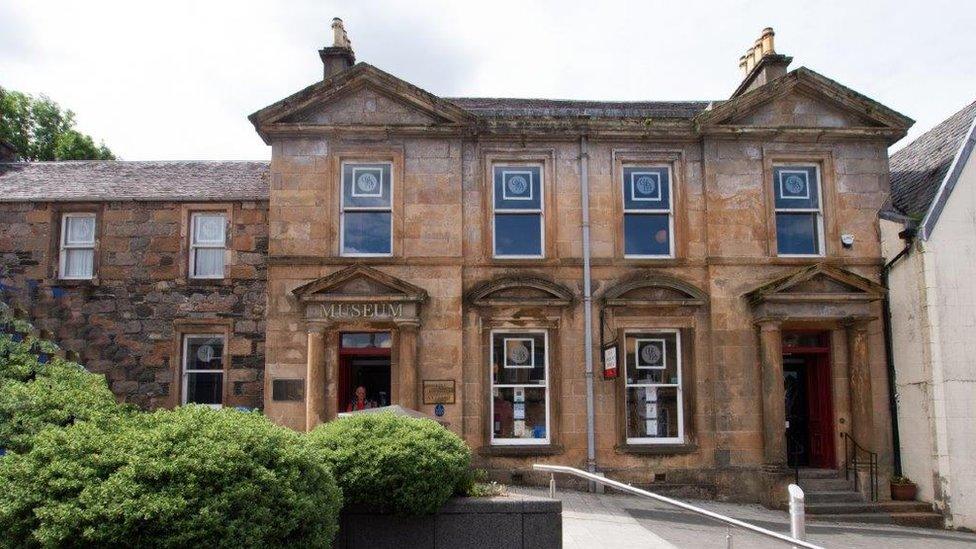
The museum is known as a Jacobite focused museum, with a collection of objects relating to the Jacobean Era
The earlier portrait was painted on top of a Jacobite battle flag with a red saltire on a white background.
In the X-ray image, it shows the coat of arms of the Menzies of Shian, who fought for Charles during the uprising.
A banner of a similar description was captured after the Battle of Culloden in 1746.
Charles stayed at Castle Menzies on his way north to Inverness in 1746, so it could be that the portrait was painted at about this time.
'Remarkable accomplishment'
Dr Grosvenor found the painting in 2019 at an auction and said he had a feeling something more was there.
"I'm a Jacobite obsessive and I'm always optimistic so I saw this portrait and I thought, there's something wrong with it because he's got blue eyes and the prince had brown eyes.
"I just sort of plugged away. The pandemic came along and then finally I was able to get it X-rayed and suddenly beneath the image we could see in the X-ray, not only the earlier portrait, but that it was painted on top of a Jacobite battle flag."
The portrait, which is on is on loan from Dr Grosvenor, will be displayed in the museum's Jacobite gallery until the end of December 2023.
Vanessa Martin, curator manager of the West Highland Museum said: "The discovery of this unknown portrait of Prince Charles Edward Stuart is a remarkable accomplishment and we are delighted that Dr Grosvenor has chosen to loan this important painting to the West Highland Museum for its inaugural public display.
"It will be exhibited in our Jacobite gallery alongside an image of the X-ray revealing the original portrait and the banner hidden beneath the now visible portrait."
Related topics
- Published13 February 2019
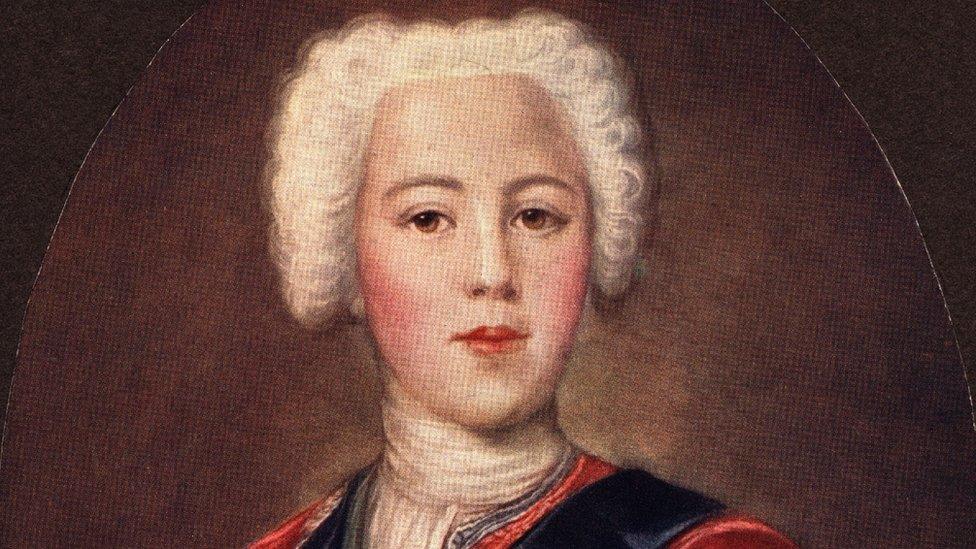
- Published10 April 2019
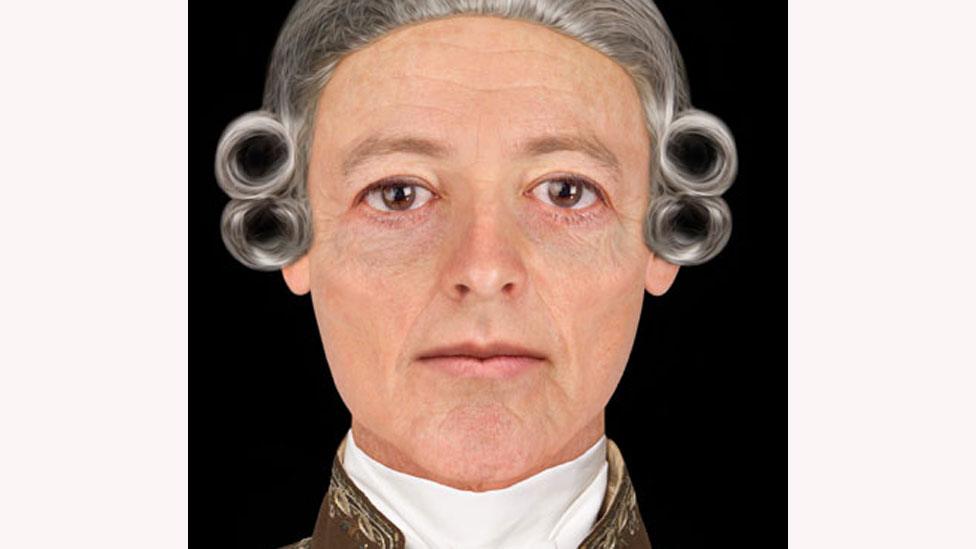
- Published23 June 2017
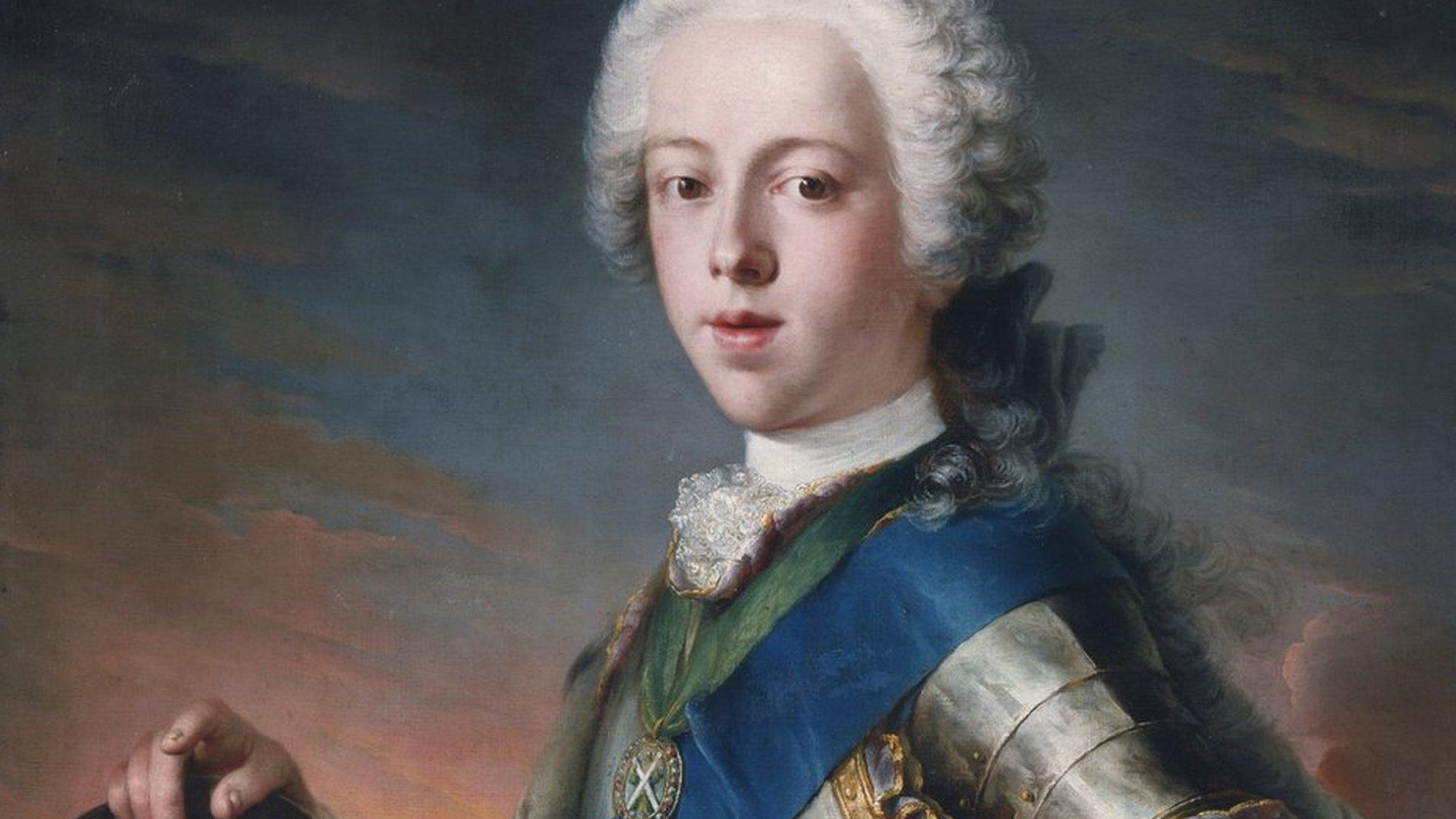
- Published21 February 2014
